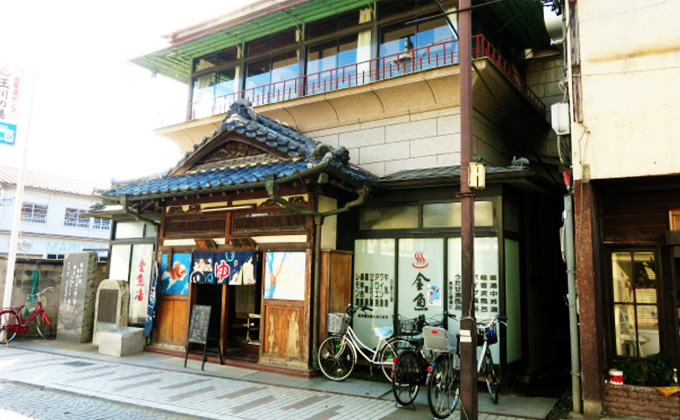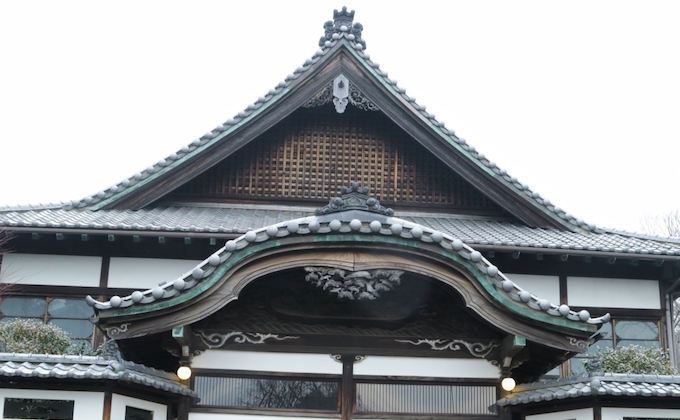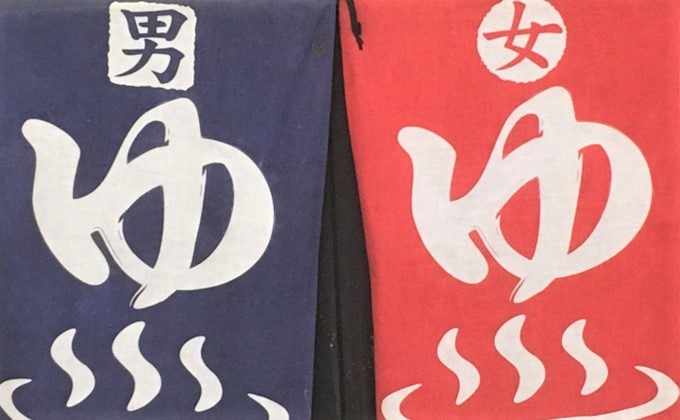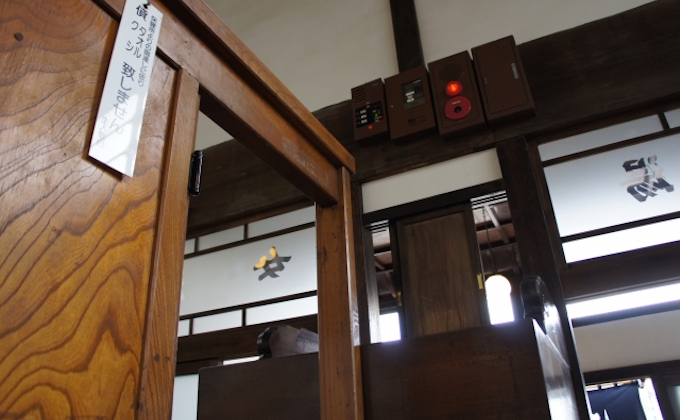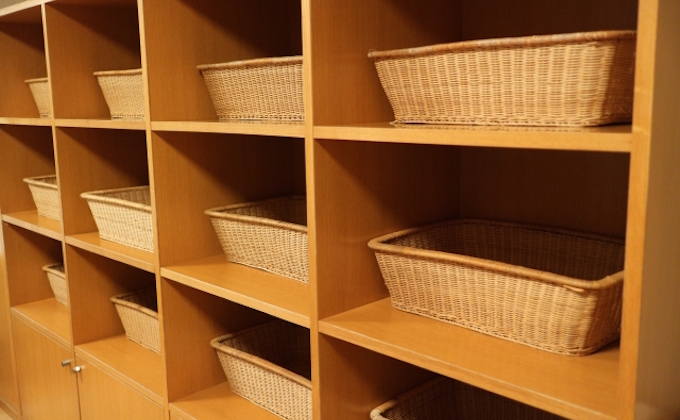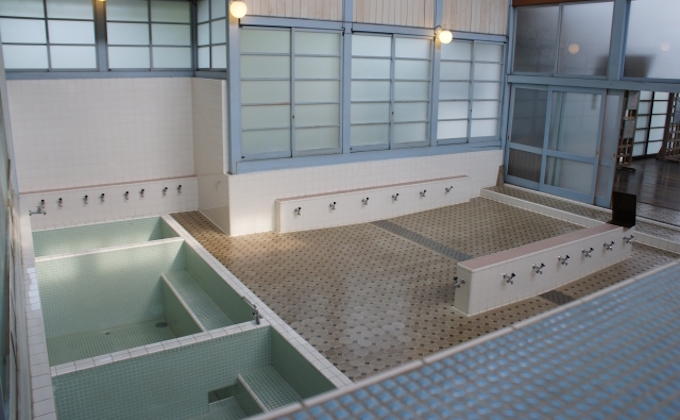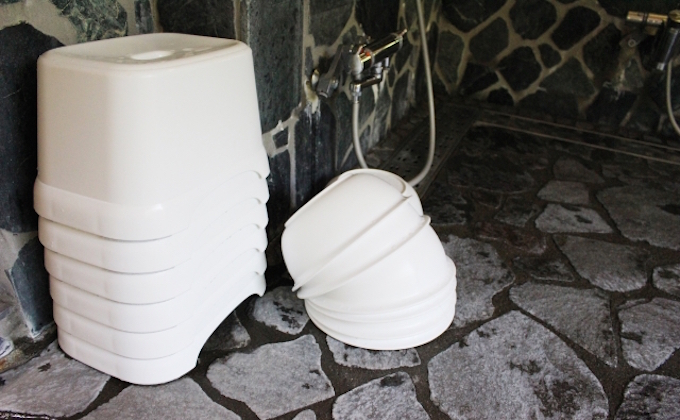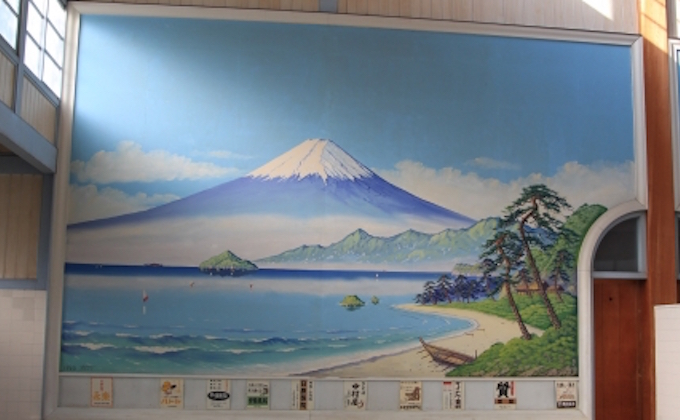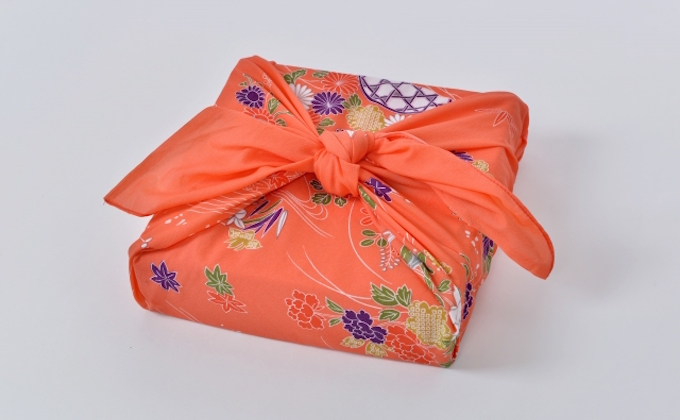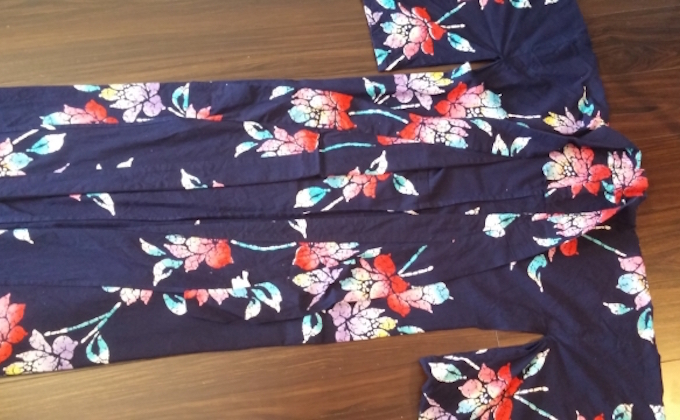TRG Info and Advice
Aah… it feels GOOD!!—Invitation to a Sento—
Many tourists from abroad look forward to indulging in onsen (hot spring) experiences in Japan. A visit to the onsen will surely leave you with fond memories of Japan, but if you would like to go deeper into the daily life of Japanese people, a sento, or public bathhouse, might be a good choice.
The sento, also called furoya (literally: bath house), is a communal bath. There are about 4,000 sentos around Japan, most of which can be found in city areas. For a fee of a few hundred yen, you are allowed to use the bathing facilities.
While ancient Romans seem to have enjoyed bathing in public baths, called “thermae,” which were built in all parts of the empire since the time before Christ, the history of Japanese public baths dates back to the 6th century, when Buddhism was introduced. Large temples were equipped with bathrooms used for purification and bathing. These bathrooms in temples were not only for monks, but for the sick and poor, too, and such bathing services were considered an important part of Buddhist missionary work. Temple bathhouse buildings still remain in Nara, such as at Todaiji Temple and Hokkeji Temple.
The religious implications of the bathhouse were gradually lost, and in the 16th century, a bathhouse requiring a fee, similar to those of today, appeared in Edo. Later, at the beginning of the 17th century, the concept spread citywide. Bathing practices, at that time, were different from today, so it was more of a steam bath or sauna. The bathing style evolved into one where you soak only your feet in hot water and steam-bathe your body, and, eventually, to the one where you soak completely in the bathwater. Only a few houses were equipped with baths in Edo, because water was precious in the city, and its use was strictly limited to preventing fires from spreading. This encouraged folks to go to bathhouses. It was the beginning of the 1700’s when people began bathing fully naked. Until then, men wore a loincloth (yu-fundoshi), and women wore a cloth wrapped around their waists. You may be surprised to hear that, until it was forbidden in 1872, co-ed bathing was the norm.
Now, what is a sento like today?
Let’s have a look at the appearance first. Historical sentos have a temple-like appearance called Miyazukuri. You will see a tall chimney rising above the roof. The projecting entrance has an undulating gable (karahafu), and the main building has a tiled roof with triangular-shaped dormer gables (chidorihafu). This is the signature style of sentos, which are seen mainly in Tokyo and its surrounding areas.
Passing through the entrance curtain (usually printed with a ゆ (yu) character, which means hot water/bath in Japanese), you will find separate entrances for men and women. The one with 男 is for men, and the other, with 女 is for women. Remember these Chinese characters and which is which, or you will be in big trouble!
Take your shoes off at the entrance hall, and put them in a shoe locker or cubby (getabako, in Japanese). If the key has a band, put it on your wrist or ankle. Once you are in, pay the fee at the bandai (a raised level front desk), where you can also buy soap and towels, as well as cold drinks.
In the changing area, there are baskets or lockers in which to place your clothes and other belongings. There are also chairs, where you can sit and wait until you stop sweating after the bath. Scales, fans, massage chairs and more are usually available. Some sentos have courtyards accessible from the changing area, and you can cool off on a veranda facing the inner court. You can see people spending time as they please: chatting with each other; having a cold drink (a bottle of milk after bathing is traditional); and sitting in massage chairs.
Now remove your clothes and place them neatly in the baskets or lockers provided. If there are shelves, make sure you put your basket back so that it does not get in the way of others. Many modest people wrap a towel around their waists to get from the changing room to the bath, but it’s not required. And towels are not allowed inside the actual bath. A large bath that can accommodate many bathers at a time usually sits at the back of the bathing area. Before getting in, make sure to wash your body and hair thoroughly at one of the showers and faucets on the surrounding walls, which are also equipped with mirrors. In some large bathhouses, there is a chest-high wall in the middle of the bath area, both sides of which supply mirrors, showers and faucets. Feel free to use the bath stools and wash basins piled at the entrance. If you have long or medium-length hair, be sure to tie it up so that it doesn’t touch the bathwater when you get in. Detailed Japanese bathing etiquette can be found at the following links.
Go ahead and soak in the bathwater after you wash yourself. The water might be hotter than you are used to, so don’t rush into the bath! Take your time to get used to the temperature of the water. Once you have soaked for a while, with your legs stretched out, you may find it soothing! Some sentos have a wide variety of baths, including a hydro-jet bath, a cold water bath, a sauna, and more. Why not visit as many areas as possible? But, be careful not to get dizzy! It is important to keep hydrated, and not to soak too long, especially if you have any type of medical condition, including pregnancy, or have been drinking alcohol. If you do start to feel dizzy or nauseous, try soaking just part of your body, such as your hands or feet only. Or visit the cold bath! Some physicians recommend going back and forth between the hot and cold baths in order to stimulate good circulation.
*Bath Types
・Sitting bath: A bath with bench seats
・Jacuzzi style: A bath fitted with a device on the wall or bottom for making bubbles in the water
・Hydro-jet whirlpool bath: A bath equipped with a device for making streams of swirling
・Ultrasonic bubble bath: A bath with an ultrasonic device for creating innumerable bubbles that massage
・Carbonated bath: A bath of hot water with microbubbles of carbon dioxide in it
・Electric bath: A bath with a low-level electric current running through the hot water. It is believed that the tiny current’s vibration can ease stiff shoulders and back pain.
・Cold water bath: A bath with water at around 16-24℃ (hot water in sentos is usually 39-41℃). The cold water helps improve blood circulation by promoting the constriction and dilatation of blood vessels.
Caution: Don’t jump into the cold water. Instead, wade in slowly, and don’t soak in the cold water for a long time.
・Lying bath: A shallow bath where you can lay yourself down in hot water
・Open-air bath: A bath outdoors, so you can bathe while looking up at the stars!
・Sauna: A steam or far infrared bath
The bath area in traditional sentos features a mural painting of nature or other typical Japanese scene, which gives the bath a wide and bright perspective. This is called “penki-e” in Japanese, and expert painters draw it using only four colors. The most iconic painting features Mt. Fuji, not just the mountain, but also the near and distant views. For example, a beach in front, the sea in the middle, and Mt. Fuji in the back, with light and shade contrasts. Water is an essential motif for the mural painting.
Soak in the bathwater while appreciating the painting, and you will be fully relaxed! Don’t miss the penki-e with its unique flavor when visiting a sento.
In some sentos, you can find pictures painted on wall tiles, tairu-e. The motifs are widely varied, including not only Mt. Fuji and plants, but also, historical anecdotes, and even motifs from overseas, such as Iguazu Falls in Argentina and the Matterhorn. Unlike mural paintings, pictures on tiles can be seen in sentos all over Japan, and those in Kyoto have especially artistic, elaborate designs. Why not take a bathing art tour? It will be fun to visit many sentos and compare paintings!
After fully enjoying the bath, dry yourself well before going back to the changing area. The typical cold beverages sold at sentos are glass-bottled milk, glass-bottled coffee milk, and cola. Ice cold drinks after bathing taste especially good.
Sentos used to be one of the focal points of the community, where locals gathered for communication and the fostering of friendships. However, most homes are equipped with baths today, and fewer people need to go to a sento. Furthermore, sento owners are aging and the number of sentos is in decline. Some sentos renovate and modernise their facilities to lure in younger generations, and others offer a space for elderly care or cater to joggers who need a place to change and soak after a run. Other sentos maintain their traditional appearance and interior, and remain loved and supported by local bathers; and recently, by young people and foreign customers, who find the sento culture interesting. In provincial towns, you can find a “super sento,” a bathing facility which is larger than ordinary sentos. It has a wider variety of baths, and usually add-on facilities such as restaurants, massage salons, etc. These super-sentos have taken root in daily life alongside ordinary sentos. All sentos have something that appeals to someone. Why not visit a local sento and experience this unique atmosphere yourself?
*What to bring to a sento
・Coins: a little money to pay the fee and buy a drink after bathing
・Washcloth or small towel to cover, wash and dry yourself
・Bath towel
・Soap
・Shampoo and hair conditioner
・Razors, loofahs, pumice stones, etc.
・Toothbrush and toothpaste
Usually for an extra fee, some sentos offer an “empty-handed bathing set,” which includes soap, towels, etc.
*Sento-related Miscellaneous
Furoshiki
A large, square piece of cloth that was once used to wrap clothes while bathing. It was also spread as a bath mat to wipe feet and stand on while changing after bathing. The cloth was later called “furoshiki” (literally: bath mat).
Yukata
In medieval times, people used to wear an unlined kimono made of hemp while bathing (yukatabira), and the name was later shortened to yukata. After people started to bathe fully naked, yukata were used like bathrobes after bathing. People later started to go out in these on hot days in summer, and the garment material was changed to cotton.
What if you have tattoos?
If you are heavily tattooed, you might be refused entry to a bathing facility. This is intended to exclude Japanese gangsters known as yakuza, who are closely associated with tattoos, and many people, especially the elderly, have a strong, anti-yakuza sentiment. The situation has been gradually changing, however, as people are becoming more aware of fashion tattoos and traditional tribal tattoos. Legally speaking, ordinary sentos operate for public welfare and rely on the approval of municipal governments and their subsidies, so, in principle, they cannot refuse entry (except for people with infectious diseases and those who are too unclean to share a bath with other people). On the other hand, some privately-owned bathing facilities, including super sentos, have their own rules and might ask you to hide your tattoo with a special covering sheet, or to come back during designated bathing times.
To avoid disappointment and trouble, check out the rules of each sento in advance.
*Choice Sentos
Tokyo
Daikokuyu (Senju, Tokyo)
This sento has a magnificent mural painting of Mt. Fuji.
Address: 32-6 Senju Kotobuki-cho, Adachi-ku, Tokyo
Opening Hours: 15:00-24:00
Closed Mondays (When a national holiday falls on a Monday, it’s closed on the following Tuesday instead.)
Takarayu (Senju, Tokyo)
Takarayu features an amazing Japanese garden and a comfortable veranda. Facing the changing area, there is a Japanese garden with a pond where carps swim.
Address: 27-17 Senju Motomachi, Adachi-ku, Tokyo
Opening Hours: 15:00-23:00
Closed Fridays
Tsubameyu (Ueno, Tokyo)
Designated a national tangible cultural property, Tsubameyu opens at six o’clock in the morning. The building’s traditional appearance and the mural painting are must-sees. Tsubameyu also features a rock bath, built using the lava of Mt. Fuji.
Address: 3-14-5 Ueno, Taito-ku, Tokyo
Opening Hours: 6:00-20:00
Closed Mondays
Kyoto
Funaoka Onsen
The colourful decorations, openwork transom panels, and elaborate tiled walls make Funaoka Onsen an extraordinary place. This is the sento which introduced the first electric bath in Japan.
Address: 82-1 Murasakino Minami Funaoka-cho, Kita-ku, Kyoto
Opening Hours: Mon. – Sat. 15:00-25:00, Sun. 8:00-25:00
Osaka
Gengabashi Onsen (Ikuno-ku, Osaka)
What makes this sento stand out is the Statue of Liberty replica (because bathing is nyuyoku in Japanese, which sounds similar to New York, where the Statue of Liberty stands) on the roof, and the killer whale-shaped ornaments at both ends of the roof ridge. Once you step in, you will find a white ceiling with a chandelier. The upper floor used to be a dance and beer hall. Designated a national tangible cultural property in 1998, Gengabashi Onsen is a sento with a luxurious feel.
Address: 1-5-33 Hayashi-ji, Ikuno-ku, Osaka
Opening Hours: 15:00-3:00
Closed Mondays
*Useful Link
Tokyo Sento Association http://www.1010.or.jp/english/
Want to know more? Click here for a collection of articles on everything Japanese.






